Winners of the 2022 Pella Windows and Doors Prize for Architecture
April 19, 2022
Five housing projects by fourth-year undergraduate students at the Azrieli School of Architecture & Urbanism have received the 2022 Pella Windows and Doors Prize for Architecture.
The $3,000 scholarship, established by Pella Windows and Doors in 2020, recognizes students for demonstrating excellence in their fourth-year comprehensive studio project.
“We are extremely grateful to the Pella Corporation for its five-year commitment,” said studio coordinator Associate Professor Benjamin Gianni.
“As housing is such a crucial issue in Canada and around the world, we’re delighted that these prizes can be directed to this studio, in which students have the opportunity to explore the architect’s role in the production of housing and in the design of the urban and public realms.”
The studio explored the redevelopment of:
– Somerset St. (between the Plant Recreation Centre and the O-Train tracks,) with support from the City of Ottawa;
– The former bus station site on Catherine St., with sponsorship from Brigil;
– The corner of Innes and de Lamarche Roads in Orleans, in partnership with Groupe Lépine.
Each of the 2022 winning projects receives $600.
Village Green
Angela Jang and Amelia Bloem

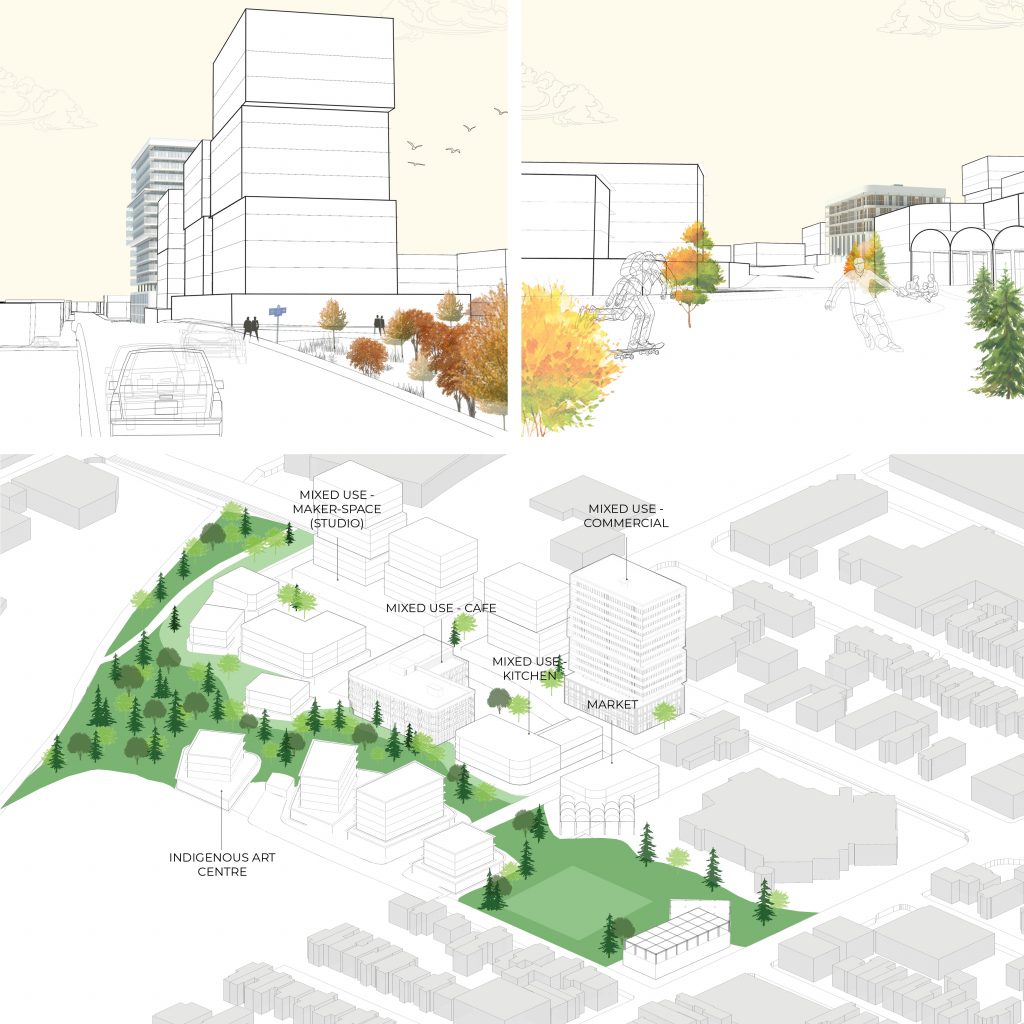
Village Green is designed based on the question ‘where would we want to live?’ and how pockets of green relief can contribute to a better quality of life. We saw the Trillium Pathway and the density of Somerset St. as an opportunity for people and nature to interweave within our urban plan. It has been noted that there is a disproportionate lack of exposure to the natural world in areas of socio-economic disadvantages. Therefore, as a social housing development, we want to expand the conversations on how these urban plans can be built. Our urban design and building forms were designed with the hope to benefit cognitive, physical, and emotional health with the ecological context, mixed demographic, and programmatic flexibility.
Boa Complex
Gracious Chitenderu
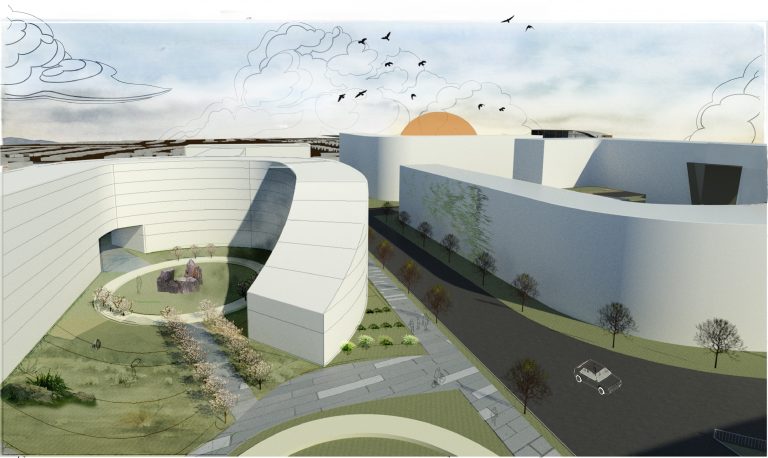
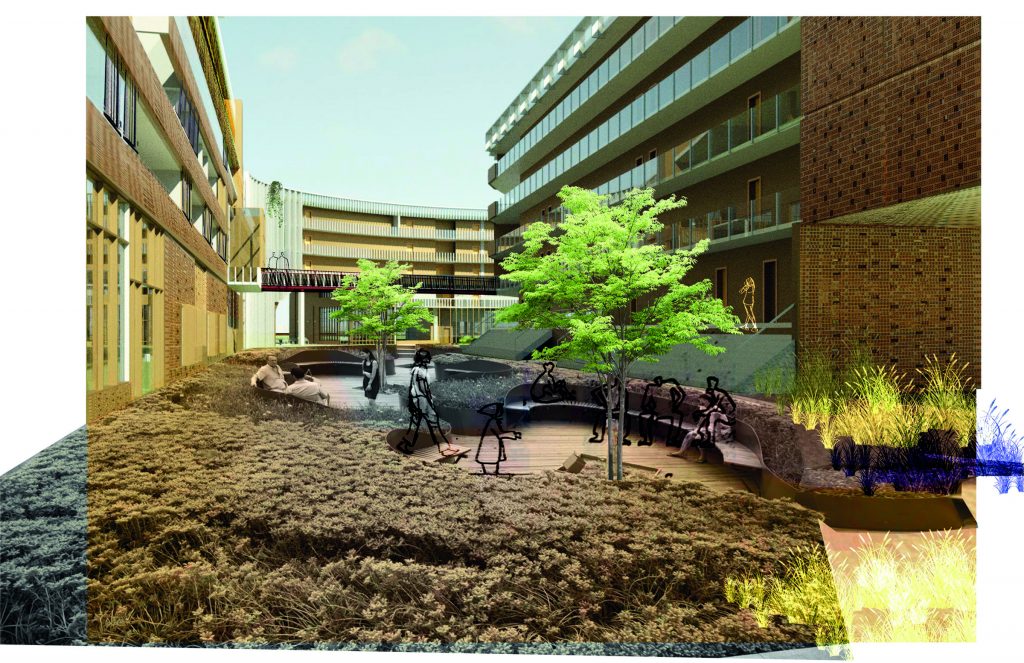
Let a home not just be for refuge but also evoke one’s creativity and sense of belonging.
For this proposal, The Little Prince novel serves as a visual metaphor. The author illustrates the responsibilities demanded by relationships. In the same way, Boa Complex hints at housing design with multi-dimensional character. The act of inhabiting the space alters the perspective on community building.
“I showed my masterpiece to the grown-ups and asked them if my drawing frightened them.
They answered: “why should anyone be frightened by a hat?”
My drawing was not of a picture of a hat,
It was a picture of a boa constrictor digesting an
elephant”
~The Little Prince
Green Pocket Community
Noah Desjardins and Nishant Dave
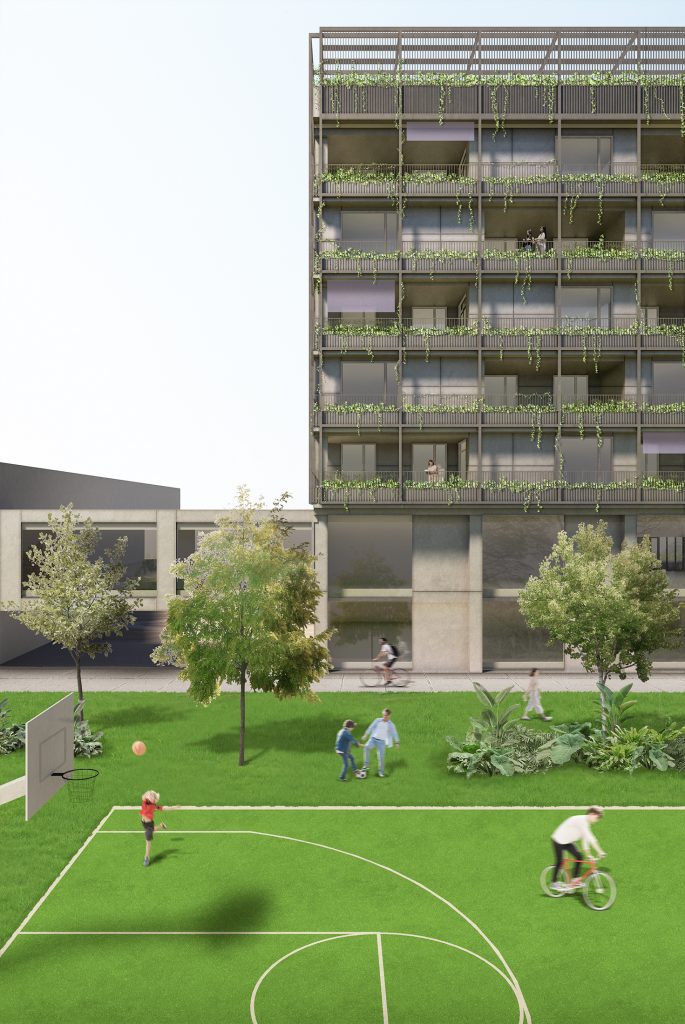

Green Pocket Community is a holistic social housing district, breaking from the traditional urban environment of Ottawa by rotating the grid. This strategic move constructs an important social element, a green corridor connecting Somerset and Preston Streets. This green pathway is a social hub encouraging the inhabitants to interact and engage in various social and cultural activities. The adjacent housing is purposely staggered along the green corridor to create pockets of green space for fixed activities: sports, Indigenous exhibitions, and social gardening. The facades are scattered with continuous greenery to demonstrate the continuity of the green corridor. In addition, the green corridor is complemented with paved piazzas, designed specifically for activities requiring hard surfaces: skateboarding, hopscotch, and road hockey.
Traverse Housing Development
Sideqa Haqani and Justin Li

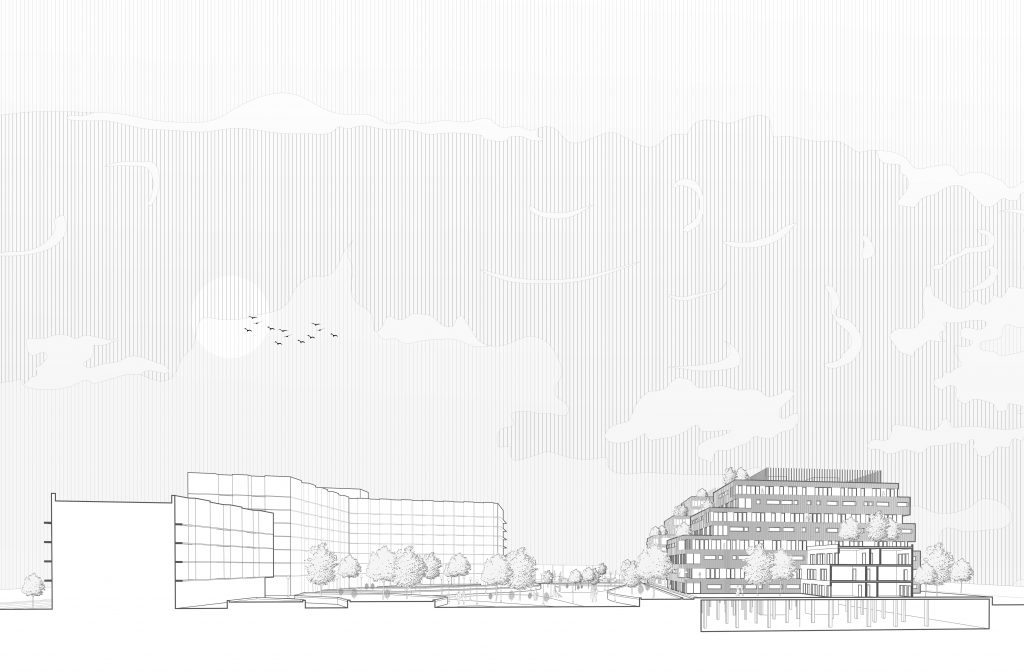
Traverse proposes a “fabric of landscape” in the quickly urbanizing east urban community of Orleans. With significant densification anticipated over the coming decade, Traverse fosters a vibrant, mixed-use community with adaptable residential units, service-oriented retail, and remote-working solutions. Simultaneously, as Orleans becomes progressively urbanized, the project strives to respect the suburban context by allocating generous green spaces, such as the municipal park and community gardens. Traverse is designed to support a diverse range of demographics, including young professionals, families, and individuals aging in place. Accordingly, Traverse offers a wide range of housing typologies and public amenities to support the unique socio-spatial needs of each resident.
Centretown Loop
Tim Schmidt and Bennet Harvey

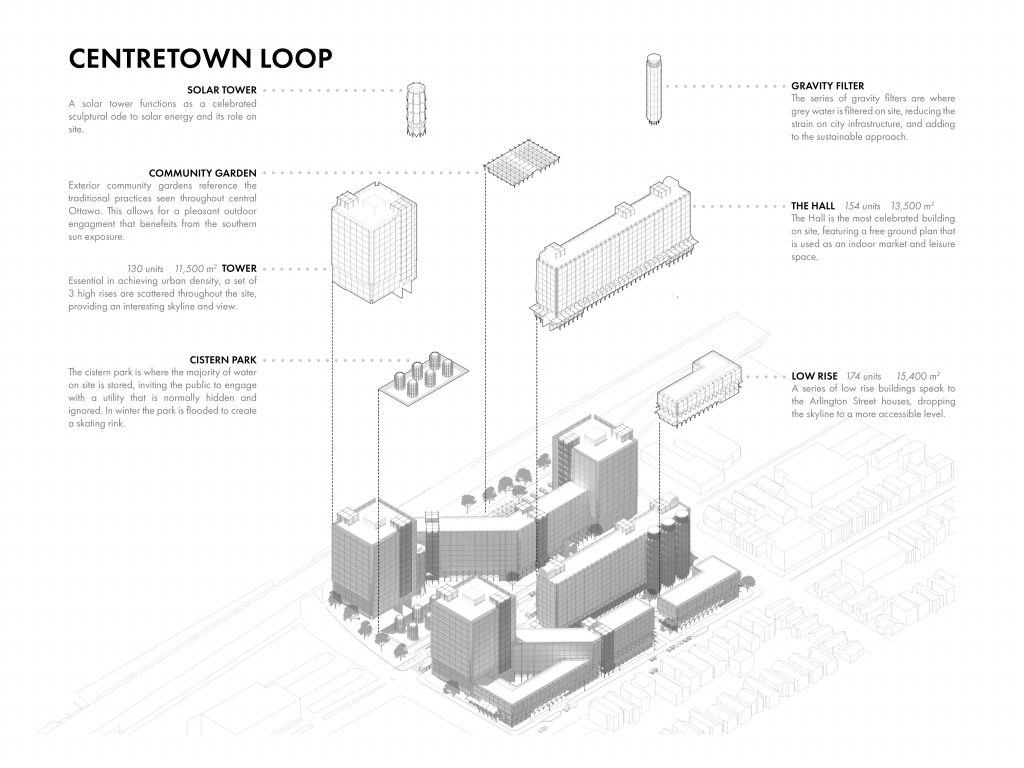
Centretown Loop seeks to be a precedent for progressive urban community living. Reconnecting urban residents with their environment while celebrating the infrastructure that supports them forms the project’s mission. Inspired by the network of community gardens throughout central Ottawa, much of the site is devoted to greenhouse space to bring local fresh produce to residents and the neighbourhood. Tenants can use garden space for their kitchens or sell their yields at the onsite market. Water is stored and filtered onsite through a series of cisterns and gravity filters. Energy is supplied from solar augmented mesh facades and roof arrays to offset the site’s demand.
The six professors and instructors who taught the fourth-year comprehensive housing studio selected the recipients. They are Piper Bernbaum, John Cook, Jelle de Roeck, Benjamin Gianni, Nicole Moyo, and Honorata Pienkowska.
As coordinator of the fourth-year comprehensive (Housing and City-Building) studio, I’m thrilled that we have three sets of prizes available to recognize our students’ work,” said Associate Professor Benjamin Gianni.
“The Pella and Chinese Professionals prizes differ from the Hobin Prize to the extent that they are juried by the instructors themselves, who look at all projects produced in the studio, not just a limited number of nominees,” he said. “As we are looking at work from the ‘inside,’ we bring a different but complementary perspective to the choices we make.”